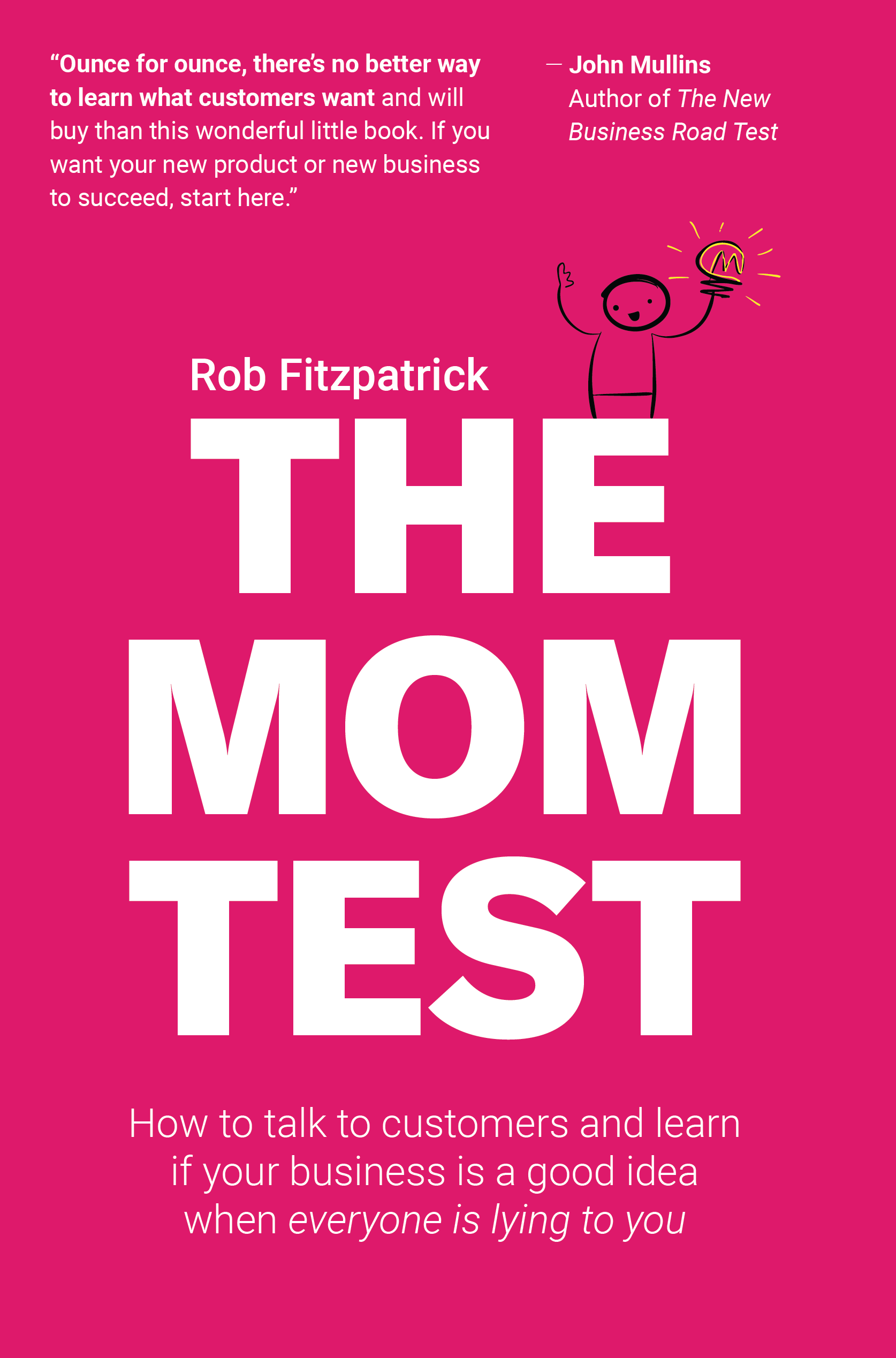Rob Fitzpatrick - The Mom Test
My rating: ★★★★★ (95%)
TL;DR: Read “The Mom Test” if you’re creating a product and need to talk to customers or if you want to get better at getting unbiased facts from people.
“The Mom Test” is a concise guide on how to talk to potential customers and discover if your product solves their needs.
Key idea: Don’t discuss your idea. Talk about their problems
you aren’t allowed to tell them what their problem is, and in return, they aren’t allowed to tell you what to build
If you just avoid mentioning your idea, you automatically start asking better questions. Doing this is the easiest (and biggest) improvement you can make
The book is called “The Mom Test” because by applying this idea, even your Mom can’t lie to you about loving your idea/product (because you won’t share it).
Digging Deeper: Ask for Specific Examples
Ask for specific examples to get beyond vague opinions and general statements. When they say “I do that all the time,” ask “When was the last time?” If they claim “I would buy that,” ask “How much time have you spent searching for a solution?” Equipped with these facts, you can form your own conclusion about whether there’s a problem worth solving.
The measure of usefulness of an early customer conversation is whether it gives us concrete facts about our customers’ lives and world views.
Broadly applicable principles
I was surprised that the Mom Test principles also apply to designing engineering surveys at my workplace. This week, I created a survey about problems engineers face in our codebase. Before reading this book, I would have made several mistakes with leading questions:
- Before: Rank these three problems by importance to you.
- This shares my preconceived notions with a predefined list.
- After: Please list the three most serious issues you’ve encountered in the codebase over the past two months (include examples).
Key Points Summary
While not discussing your idea is the main takeaway, there’s more to consider:
- Clearly define your target market segment and invest time in researching their workflows and challenges.
- Prepare 3 pressing questions you need answered, focusing on experiences and facts rather than opinions.
- Ideally, don’t reveal your idea, but if you must, deflect compliments and keep the focus on the customer’s problem.
- When appropriate, ask for commitment. That can be time (another meeting), reputation (introductions to others), or money.
- Continue customer conversations until you stop hearing new information. If you still hear new information after ten meetings, narrow your market segment.
An interesting side note from the book, not necessarily related to product development, suggests that when facing an unpleasant task, imagine you’re delegating it to someone else and write instructions for them, then follow those instructions yourself.
Overall, I found the book enjoyable and highly valuable. While talking to customers can be daunting, this compact book provides a complete framework and plenty of examples on how to do it.
